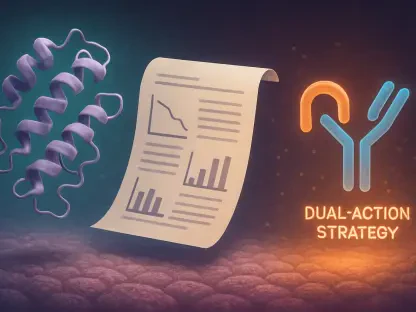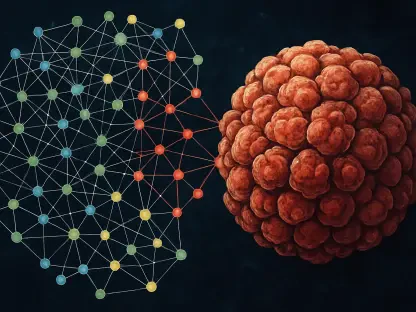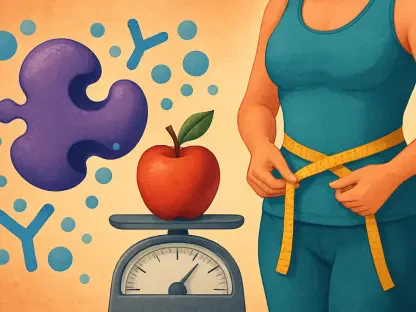Gene therapy has emerged as a revolutionary approach to treating genetic disorders by delivering therapeutic genetic material directly into patients’ cells. Among the various vectors used for gene delivery, Adeno-Associated Virus (AAV) vectors have gained significant attention due to their safety profile and tissue specificity. This article delves into the advancements and challenges associated with AAV vectors in gene therapy clinical trials, providing a comprehensive overview of their mechanisms, benefits, and the critical role of immune response management.
The Rise of AAV Vectors in Gene Therapy
AAV Vectors: A Safer Alternative
AAV vectors have become a preferred choice in gene therapy due to their reliance on helper viruses for replication, which significantly reduces the risk of pathogenicity and vector integration. Unlike lentiviral and adenoviral vectors, AAV vectors do not integrate into the host genome, minimizing the risk of insertional mutagenesis. This safety advantage was highlighted by the FDA approval of Luxturna in 2017, an AAV vector therapy for gene replacement, marking a significant milestone in the field.
The non-integrative nature of AAV vectors means they are less likely to disrupt essential genes in the host’s DNA, averting many potential side effects that plague other viral vectors. This attribute, coupled with their ability to remain episomal—to exist independently within the nucleus without integrating into the genome—enhances their reliability and safety profile. The approval of Luxturna underscores the compelling promise AAV vectors hold for curing genetic disorders, particularly those involving the retinal, liver, and neuromuscular systems. This significant progress reiterates the importance of continued research and development in AAV vector-based therapies, aiming to overcome present limitations while harnessing their full therapeutic potential.
Tissue Specificity and Therapeutic Potential
One of the key advantages of AAV vectors is their ability to target specific tissues, enhancing the precision and efficacy of gene therapy. This tissue specificity is achieved through the use of different AAV serotypes, each with a unique tropism for various cell types. This characteristic makes AAV vectors particularly suitable for treating diseases that affect specific organs or tissues, such as the retina, liver, and muscle.
AAV vectors exhibit a remarkable capacity for customization; different serotypes are naturally predisposed to infect distinct cell types, allowing researchers to tailor gene therapy approaches to target diseased tissues more effectively. For instance, AAV2 shows a high tropism for retinal cells, making it ideal for ocular gene therapies, while AAV8 and AAV9 have demonstrated efficacy in liver and muscle tissues, respectively. This tailored approach not only increases the therapeutic impact but also reduces off-target effects, leading to safer and more effective treatments. Furthermore, the continuous discovery and engineering of novel AAV serotypes promise to extend the therapeutic reach of these vectors, potentially offering solutions for a broader spectrum of genetic disorders.
Overcoming Immune Response Challenges
Humoral and Cellular Immunity
Despite their advantages, AAV vectors face significant challenges related to immune responses. Pre-existing neutralizing antibodies against AAV, often due to natural exposure to the virus, can prevent successful transgene delivery. Additionally, the induction of T-cell-mediated immune responses can lead to the clearance of transduced cells, reducing the efficacy of the therapy. Understanding and managing these immune responses are crucial for the success of AAV-based gene therapies.
The human immune system is adept at recognizing and responding to viral vectors, presenting substantial hurdles for gene therapies. Neutralizing antibodies, formed from prior exposure to naturally occurring AAVs, can impede vector entry and compromise gene delivery. This is particularly challenging as these antibodies are prevalent in the general population. Furthermore, once the vector successfully delivers the therapeutic gene, the host immune system might still target the transduced cells expressing the new gene, resulting in their eventual destruction by cytotoxic T cells. This dual threat of humoral and cellular immunity necessitates comprehensive strategies to either evade or suppress these immune responses to ensure gene therapy’s success.
Strategies to Mitigate Immune Responses
To address these challenges, researchers are exploring various strategies to mitigate immune responses. These include the use of immunosuppressive drugs, engineering AAV capsids to evade immune detection, and developing novel serotypes with reduced immunogenicity. Additionally, pre-screening patients for pre-existing antibodies and selecting those with low antibody titers can improve the chances of successful gene therapy.
Immunosuppressive treatments, such as corticosteroids, can help dampen the body’s immune response during the initial phase of gene therapy, enhancing the survival and integration of transduced cells. Moreover, advancements in capsid engineering are aimed at modifying the viral shells to either evade antibody detection or diminish recognition by T cells. Innovative approaches include the design of capsid variants that are less recognizable to the immune system while maintaining their efficacy in delivering genetic material. Pre-screening protocols that identify patients with low or no pre-existing antibodies against the AAV serotype in use can further refine patient selection, leading to higher success rates. Combining these strategies creates a robust framework to mitigate immune challenges, thereby broadening the therapeutic applicability of AAV vectors.
The Role of ELISpot Assays in Clinical Trials
Evaluating T-Cell Responses
The enzyme-linked immunosorbent spot (ELISpot) assay is a critical tool for evaluating immune responses in gene therapy clinical trials. This assay detects low-frequency immune cells and measures antigen-specific T or B cell responses, providing valuable insights into the immune landscape of patients undergoing AAV-based therapies. By using peptides specific to the viral vector or transgene, researchers can assess the presence and magnitude of T-cell responses, which is essential for optimizing therapeutic strategies.
Understanding T-cell responses is particularly crucial as cytotoxic T cells play a significant role in the immune clearance of transduced cells. The ELISpot assay offers precise and sensitive detection of these immune responses, even at low frequencies. By measuring cytokine production at the single-cell level, the assay reveals detailed information about the immune activity against the AAV vectors and the transgenes they carry. This data helps researchers tailor gene therapy protocols, such as adjusting dosages or timing of immunosuppressive interventions, to optimize therapeutic outcomes while minimizing immune-mediated adverse effects. The insights provided by ELISpot assays are instrumental in fine-tuning gene therapies to ensure they are both safe and effective.
Validation and Reliability of ELISpot Assays
For ELISpot assays to be reliable in clinical trials, they must undergo thorough validation. This includes assessing parameters such as precision, sensitivity, linearity, specificity, robustness, and stability. The availability of donor control samples and the use of generic control peptides are crucial for ensuring the accuracy and consistency of the assay. Peptide pools from common antigens like CMV, EBV, and influenza are often used as controls to evaluate the health and reactivity of peripheral blood mononuclear cells (PBMCs).
Validation is a multi-faceted process that ensures ELISpot assays can reliably detect specific immune responses in patients. Precision measures the assay’s reproducibility across different runs, while sensitivity ensures that even low-frequency responses are detected accurately. Linearity evaluates the assay’s capability to provide proportional responses over a range of cell concentrations. Specificity confirms that the assay correctly identifies responses to the intended antigens without cross-reactivity. Robustness and stability guarantee the assay performs consistently under varying conditions. Donor control samples and generic control peptides, especially from widely recognized antigens, serve as practical benchmarks to standardize results across diverse populations. This thorough validation is pivotal for a rigorous and interpretable assessment of immune responses in clinical trials.
Addressing Limitations and Enhancing Assay Performance
Control Peptide Pools and Ethnic Specificity
A significant limitation in the development of ELISpot assays is the availability of relevant control peptide pools. Many existing pools, such as CEF, CEFT, and CERI, are designed for Caucasian population-specific HLA alleles, limiting their applicability across diverse ethnic groups. This necessitates the development of more inclusive control peptide pools to ensure the reliability of ELISpot assays in a broader patient population.
Control peptide pools are critical for assessing the functionality and responsiveness of PBMCs in patients from varied backgrounds. Current pools, tailored primarily for Caucasian HLA alleles, may not be representative of the global patient demographic undergoing AAV-based gene therapies. This disparity can lead to inaccurate assessments and potential false negatives, particularly in populations with distinct HLA distributions. Developing comprehensive, multi-ethnic control peptide pools is thus a priority. These inclusive controls will enable accurate evaluation of immune responses across diverse populations, enhance assay reliability, and ensure equitable effectiveness of gene therapies worldwide.
Positive and Negative Controls
Positive controls are essential for ensuring the reliability of ELISpot assays. They provide historical data comparisons and allow for the quick identification of deviations in assay performance. Negative controls, on the other hand, help prevent false positives by establishing baseline background signals. Typically, media with the same peptide solvent concentration as test wells or non-reactive peptides are used as negative controls.
Including both positive and negative controls creates a balanced framework for determining the accuracy of ELISpot assays. Positive controls, often using well-characterized peptides that elicit robust immune responses, ensure that the assay is functioning correctly and consistently. They also provide a benchmark for comparing patient data, enabling researchers to detect any anomalies swiftly. Negative controls, by establishing the baseline noise level, help distinguish true immune responses from background activity. Using non-reactive peptides or media without stimulants helps maintain assay specificity. Together, these controls form a comprehensive system for monitoring assay performance, enhancing the reliability of immune response evaluations in gene therapy trials.
Clinical Validation and Future Directions
Assessing Pre-Existing Immunity
Clinical validation of ELISpot assays involves determining the assay’s cut-point, precision, and limits within the context of patient monitoring during gene therapy trials. The prevalence of AAV-specific T cells among the general population aids in identifying pre-existing immunity, which is crucial for trial screening. This information helps refine assay sensitivity and enhances confidence in patient responses.
Accurate assessment of pre-existing immunity is vital for selecting suitable candidates for AAV-based gene therapy trials. The presence of AAV-specific T cells can significantly impact the efficacy of gene delivery and subsequent therapeutic outcomes. By establishing precise cut-points and evaluating the assay’s precision, researchers can better identify individuals with potentially problematic immune profiles. This preemptive screening reduces the likelihood of adverse immune reactions and increases the chances of successful gene therapy. This meticulous validation process, combined with refined patient selection criteria, aims to maximize therapeutic benefits while mitigating risks associated with pre-existing immune responses.
Evolution of AAV Vector Technologies
Gene therapy has become a groundbreaking method for treating genetic disorders by delivering therapeutic DNA directly into patients’ cells. Among the various methods for gene delivery, Adeno-Associated Virus (AAV) vectors have garnered substantial attention due to their safety and ability to target specific tissues. This article explores the progress and obstacles related to AAV vectors in gene therapy clinical trials, offering an in-depth look at their mechanisms, advantages, and the vital importance of managing immune responses.
AAV vectors are particularly prized for their relatively low pathogenicity and straightforward encapsidation of therapeutic genes. These vectors can infect dividing and non-dividing cells without integrating into the host genome, reducing the risk of insertional mutagenesis. Furthermore, AAVs have shown a proficient ability to deliver genes to a variety of tissues, such as the liver, muscle, and central nervous system.
However, the success of AAV-mediated gene therapy heavily hinges on the management of the body’s immune response. The immune system can recognize and attack AAV vectors, which may compromise the effectiveness of the treatment. Strategies are being developed to evade immune detection, such as using immunosuppressive drugs and modifying vector capsids to reduce immunogenicity.
In conclusion, AAV vectors represent a promising tool in gene therapy, bringing hope for effective treatments of genetic disorders. Ongoing research aims to overcome the immune challenges, enhancing the safety and efficiency of AAV-based therapies in clinical settings.









